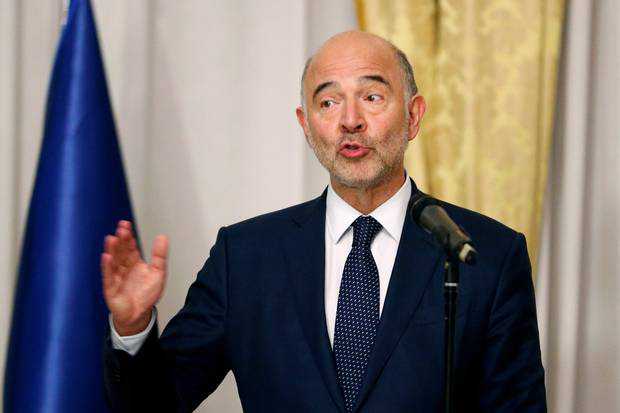Italian debt premium drops as Brussels eases its stance
21 October, 2018

Italian bonds and stocks snapped two days of losses after the European Commission struck a more conciliatory tone toward the country's spending plans, easing heightened tensions between the two.
The premium that lenders charge to hold Italian 10-year bonds rather than German bonds, known as the yield spread, had hit the highest level in more than five years.
But the gap closed after European Commissioner for economic affairs, Pierre Moscovici, said that the bloc wouldn't interfere in the new government's economic policies.
It followed a letter on Thursday from the institution that said the proposed spending plans were excessive, though it is still to give a final verdict.
"It's the other way round to the recent pattern," said Christoph Kutt, head of rates strategy and sovereign credit at DZ Bank in Frankfurt.
"First the EU and Italy want to appear very strict and spreads widen, then the EU and Italy play down the issue to prevent spreads from widening any further. Especially when they're north of 300 basis points."
Italy's 10-year yield fell 13 basis points to 3.56pc, having earlier touched 3.81pc, the highest level since May 2014.
The yield spread was at 313 basis points, having earlier widened to 341 basis points, the highest level since April 2013.
Milan's main stock market rose slightly yesterday. The euro rallied 0.4pc to $1.1495 on Commissioner Moscovici's comments.
Even with that recovery, Italy's bonds headed for their fourth weekly loss and were set for a challenging period.
Both S&P Global Ratings and Moody's Investors Service are due to review their credit ratings on the nation before the end of the month.
Both agencies grade the debt just two notches above junk.
Italy is the Euro-area's third biggest economy, and by some way the single currency's biggest debtor.
The rally in Italy also helped ease pressure on other European debt markets, with Spain and Portugal erasing losses.
The two countries had slid in unison with Italy over the past few days, suggesting that investors were growing increasingly concerned about the prospects of a wider crisis in the region.
Unlike the period of the euro crisis, Irish bonds did not move with the weaker periphery.
On the markets, the yield on 10-year Irish government debt was 1.039pc, around half what Portugal would pay to borrow.
TAG(s):
